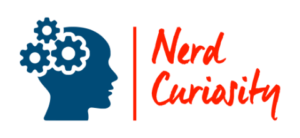In the world of Agile, the product manager emerges as a visionary, steering the product’s voyage through turbulent waters of market demands and technological changes. They are the champions of the user’s voice, ensuring that every sprint brings value not just to the business, but to the customers who await eagerly beyond the deployment pipeline. As Agile’s iterative approach dismantles the monolithic development processes of yesteryear, the product manager’s role adapts, becoming more dynamic and intertwined with every release cycle.

A product manager in Agile product management is the leader who blends strategy with execution, shaping the product’s future while keeping a firm hand on the present’s pulse. They are the nexus of customer insights, business strategy, and the development team’s heartbeat, synthesizing these elements into a product vision that thrives in agility.
Moving forward, you’ll discover how this role evolves within Agile frameworks, the practices that best support their work, the collaboration required with other roles in the ecosystem, and the importance of continually adapting to change. With each iteration and retrospective, the product manager’s skills are honed, and along with them, the product under their guidance approaches closer to the ideal that was once just a whisper of a concept.
Understanding the Role of a Product Manager

In an Agile environment, the role you’ll play as a Product Manager is pivotal to navigating the complexities of product development and ensuring the successful delivery of value to your customers.
Key Responsibilities and Goals
As a Product Manager, your key responsibilities revolve around defining and setting the vision for the product, which requires a deep understanding of customer needs and market trends. You need to:
- Identify and prioritize features by considering their potential impact and aligning them with the product strategy.
- Collaborate closely with cross-functional teams, especially with developers and stakeholders, to ensure everyone is aligned with the product roadmap.
- Assess the market to validate the product direction and make necessary pivots, keeping the product competitive and relevant.
Your main goal is to balance customer satisfaction with business objectives, ensuring the product grows in a direction that benefits both users and the company.
Skills and Best Practices
To excel in your role, you should develop a skill set that is versatile and robust, blending business acumen with technical know-how. Important skills include:
- Strategic thinking to shape the product’s future
- Strong communication to articulate visions and ideas
- Analytical abilities to interpret data and user feedback effectively
Following certain best practices helps streamline your workflow:
- Engage in continuous learning about Agile methodologies.
- Actively listen to stakeholder feedback.
- Validate assumptions with real user data.
The Agile Product Manager vs. Traditional Roles
The Agile Product Manager often contends with different demands compared to their counterparts in traditional settings. In a classic waterfall model, long-term plans are highly detailed and changed infrequently. However, Agile mandates flexibility; iterative cycles and customer feedback influence the product’s direction much more dynamically. You should expect to attend regular stand-ups and sprint planning sessions, adapt to change quickly, and maintain a product backlog that is both vibrant and prioritized. Such a role demands a resilient, adaptive approach, often with refined soft skills to manage the fluidity of Agile projects. By embracing these differences, you can thrive as an Agile Product Manager and bring unique value to your team and product.
Strategic Vision and Product Planning

In your role as a Product Manager, cultivating a strategic vision and planning the product’s journey are pivotal to success. Let’s dive into how you can establish and share your product’s vision and roadmap.
Creating and Communicating the Product Vision
The product vision is the north star that guides every aspect of the product development process. It reflects not just the aspirations for your product but also addresses the core needs of your user base and aligns with the broader business objectives. To articulately craft this vision, you’ll blend market research and feedback to ensure relevance and resonance with target users. Once defined, communicating this vision is equally essential. It’s about making sure stakeholders and your development team grasp the big picture, committing to a unified direction for future growth and evolution. An effectively communicated product vision can function as a powerful motivational tool, one that encourages teams to work towards a common goal with shared enthusiasm and purpose.
Roadmaps and Milestones
Your product roadmap serves as a strategic document that plots the course of your product. It is both a plan of action and a high-level visual summary that outlines key milestones and deliverables along the product’s lifecycle. A dynamic roadmap is not just a schedule of tasks; it’s a reflection of your strategy, detailing how your product will evolve to fulfill the vision you’ve articulated.
- Short-term landmarks outline your imminent objectives.
- Long-term achievements anticipate the innovation and adaptation of your product in the evolving market landscape.
Remember, each feature or update on your product roadmap must stem from a strategic rationale—why it’s being done and how it will take you closer to your end goal. Regularly revisiting and adjusting your roadmap is a testament to its agility, ensuring that it remains in-tune with user feedback and market changes. Through tactical planning and clear communication, your roadmap becomes an invaluable tool in the product management arsenal, imparting clarity and direction to all team members involved.
Collaboration with Teams and Stakeholders

Effective product management in Agile requires you to be at the center of a web of collaboration, ensuring everyone from the development team to the stakeholder is aligned and informed about the customer’s needs and the market demands.
Working with Development Teams
Agile product management thrives on you building a strong rapport with development teams. You facilitate regular discussions, sometimes daily, to prioritize backlogs and refine requirements. By providing clear goals and customer needs, you help developers understand the market they are catering to and empower them to make technical decisions that reflect user demand.
- Daily Stand-ups: A brief sync-up to keep everyone on the same page.
- Backlog Refinement: Regularly refine the product backlog items for clarity and priority.
Engaging with Stakeholders and Market
Your role as a product manager also entails bridging the gap between various stakeholders and the fluctuating nature of the market. You keep stakeholders informed with transparency and manage expectations skilfully. Market analysis and feedback channels help you grasp customer needs, which you then communicate to your team.
- Market Trends: Stay ahead by analyzing and sharing insights on market changes.
- Stakeholder Meetings: Regular touchpoints to ensure stakeholder understanding and buy-in.
Customer-Centric Approach
Adopting a customer-centric approach means understanding intricate customer needs and ensuring they’re the beating heart of every product decision. You regularly interact with the customer to garner valuable insights, allowing for a deeper understanding of what the market truly desires. Reflect this customer-first attitude in the product vision and development roadmap.
- Customer Feedback: Use direct feedback to guide product strategies.
- User Stories: Translate customer experiences into actionable development tasks.
Agile Practices and Implementation

In this section, you’ll discover how product managers embed Agile practices into their workflows, utilizing various methodologies to stay responsive to user needs and continuously improve products.
Incorporating Agile Principles
Agile principles serve as the cornerstone for product managers looking to foster cross-functional team collaboration and user-centric development. You’ll begin by internalizing these principles, which emphasize valuable software delivery, customer satisfaction through early and continuous delivery, and embracing change even late in development. It’s essential to cultivate an environment where individuals and interactions are prized above tools and processes, which may involve recalibrating team dynamics and expectations.
Utilizing Agile Methodologies and Tools
Choosing the right Agile methodologies and tools can dramatically streamline the implementation of Agile practices. Scrum, Kanban, and Lean methodologies offer unique frameworks that can be adapted to your team’s size, project complexity, and business objectives. For instance, Scrum operates on time-boxed iterations called sprints, with roles clearly defined to foster rapid progress and accountability. While employing these methodologies, you’ll often rely on digital tools to manage user stories, track progress, and visualize workflows—essential for maintaining a bird’s eye view on the iteration’s trajectory. Examples include project management platforms that allow real-time updates and seamless communication.
Iterative Development and Feedback Loops
Iterative development is a vital component of Agile, ensuring that your product continually evolves through sprints. Each iteration represents a complete cycle of planning, execution, review, and reflection, all aimed at incrementing product functionality. Feedback loops are integral to this process, providing insights from users and stakeholders that can be rapidly integrated into future iterations. By prioritizing feedback, you not only enhance the product but also demonstrate a commitment to your user base, leading to a more refined and desirable outcome.
Delivering Value to Customers
In the Agile framework, your primary goal as Product Manager is to ensure the delivery of tangible business value to your customers. You’ll need to measure success effectively, make informed prioritization decisions, and glean insights from customer feedback to guide the product’s evolution.

Measuring Success and Business Value
To gauge whether you’re delivering value, you should identify and track relevant Key Performance Indicators (KPIs). Examples of KPIs may include customer satisfaction scores, net promoter score, conversion rates, or user engagement metrics. These indicators should align with broader business objectives and inform whether your product is meeting its intended goals.
Prioritization and Decision Making
With countless features on the table and limited resources, you must prioritize tasks based on their potential business value and impact. Engage in market research to understand customer pain points and focus on solutions that address these issues. Use a combination of quantitative data and qualitative insights to inform your decisions, ensuring that each choice aligns with the product strategy and customer needs.
Learning from Customer Feedback
Cultivating a deep understanding of your users through customer feedback is essential. Agile product development thrives on iterative cycles that incorporate user input at every stage. Take note of the feedback and utilize it to refine your product. This assures that the final outcome truly resonates with users and provides them with significant value.
Conclusion

Agile Product Management pivots around your role in fostering a collaborative environment where the swift delivery of valuable products is paramount. In essence, your responsibilities range from strategy development to ensuring alignment across various teams. You’re at the helm, steering the product’s direction with a keen eye on vision-setting and market analysis.
You operate as the bridge connecting the business, the customers, and the development team. Your focus is to translate customer needs into actionable tasks, emphasizing regular updates to keep everyone on track. This approach is not static; you adapt as team dynamics and market conditions shift, which may also shift your responsibilities slightly, but the core of your role remains steadfast.
Remember, your involvement with scrum, kanban, or SAFe frameworks adds structure to your efforts. These processes aid in navigating complexities that surface in Agile environments. Crafting a product strategy and roadmap that champion customer advocacy is a core aspect of your job.
In integrating Agile practices, communication is your strongest tool. By communicating effectively, you maintain trust and cohesion, which is crucial for the product’s overall success. Your aim should always be to deliver high-quality outputs faster and more efficiently, aligning with Agile’s philosophy of continuous improvement and rapid iteration.
